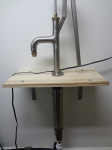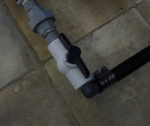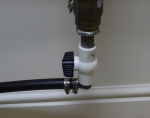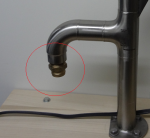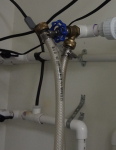Hello, I’m also one who has a Bison Pump in my basement. My well surface level is low enough that I can pump water into my basement, if needed. Like the other author said, all I have to do is turn two valves.
I’m in the process of selling my house, so I have a document written up for the new buyer explaining our water system. I’m attaching a word document detailing the Bison Pump side of it.
A few months after we moved in– seven years ago– a massive wind storm took down trees and power lines in our area. We were without power for almost a week. No power also meant no running water. Fortunately, it was fall, so temperatures weren’t an issue. However, we decided we needed to do something in the event this happened again so that we’d have water. My wife did some research and found Bison Pumps. We checked our well surface level, and since our basement is technically downhill from our well and underground, there’s a good chance we could even siphon water if we needed to, so this pump was a good choice for us.
Bison Pumps builds the pump to your specifications. If space is an issue, they can have the handle at a 90 degree angle to the spigot. We chose to keep it at 180 degrees. Initially, I had the pump facing the opposite direction; however, most people in the house are right handed, so it made more sense for the handle to be on the right side.
The platform is a simple piece of hardwood that I bought at Home Depot. Yes, hardware is more expensive. However, I expected to have this for a long time and possibly have it add to the resale value of the house (if the right buyer finds it!). I wanted it to look as good 10 years later as it did when I put it in, so I spent the few extra bucks for hardware.
Under the platform are two, large, 3-hole elbow braces. I used a stud finder to locate the studs behind the wall to mount them. Hooking up the pump required basic plumbing skills and really was not difficult at all.
In the event the power goes out for an extended period of time, you can use the hand pump to get water from the well.
FIRST AND FOREMOST, there are two warnings you must know about up front!
- The pump is not designed to hold and pump pressurized water. Make sure the appropriate valves are closed from the house side of the water system before opening the valve to the hand pump!
- Do not attempt to pump when the valve below the pump is closed or when the cover to the spigot is on.
To safely use the hand pump, close the valve to the house water supply,
and open the similar valve to the hand pump.
Remove the cap on the spigot from the hand pump. There may be some water in there. You might want to keep a small towel on the wooden platform on which the pump is mounted. At this point you should be able to pump water.
Note that the spigot is threaded to a standard “garden hose” size, so you can attach a small hose to it. Also note that normal garden hoses are not intended to have consumable water go through them. With that in mind, I made my own little hose with adapters that won’t pollute my water with nasty chemicals. The picture shown here is after my filtration system, so I can easily refill my 5-gallon water bottles.
There may be water in the hose from last time it was used; I suggest having towels handy/appropriately placed.
You *may* be able to attach the hose directly from the hand pump to the spigot after the filtration system to pump water directly into the house. If you’re going to try this, make sure the valve on the last filter is set to “off”, so that it can’t pump backwards into the system. Also make sure there isn’t any water pressure left on the house side. Theoretically, you may be able to get enough water into the line to be able to flush toilets; however, you may also damage the hand pump in the process. I’ve never tried this, and I don’t suggest you do either!










